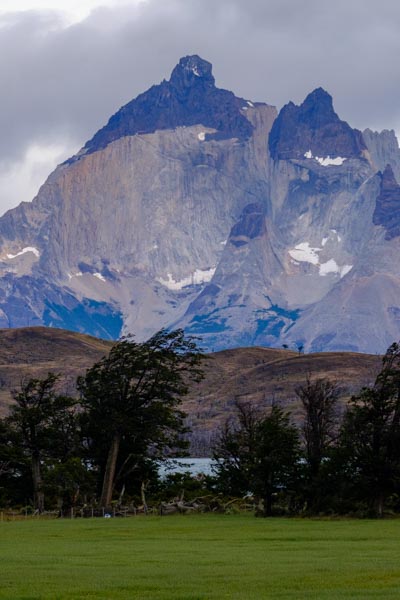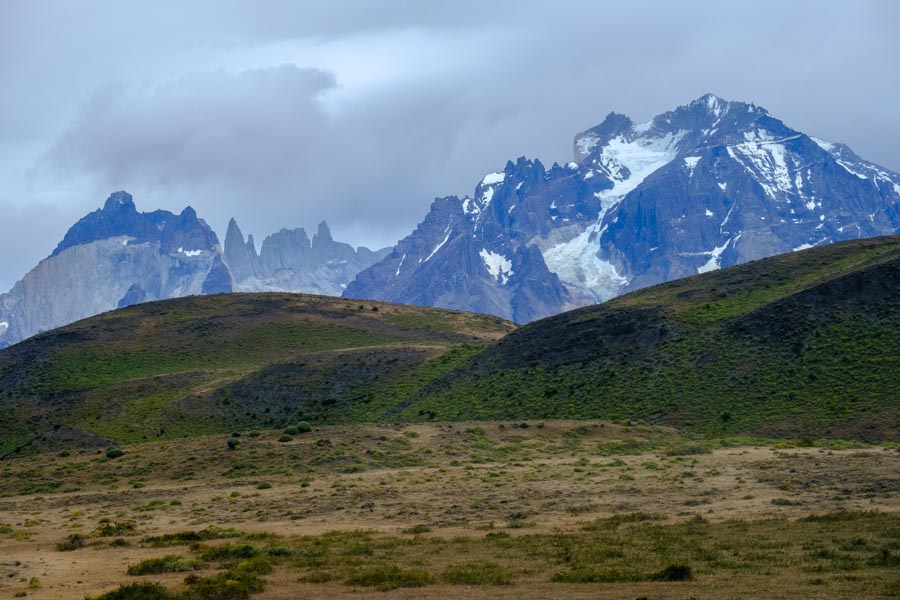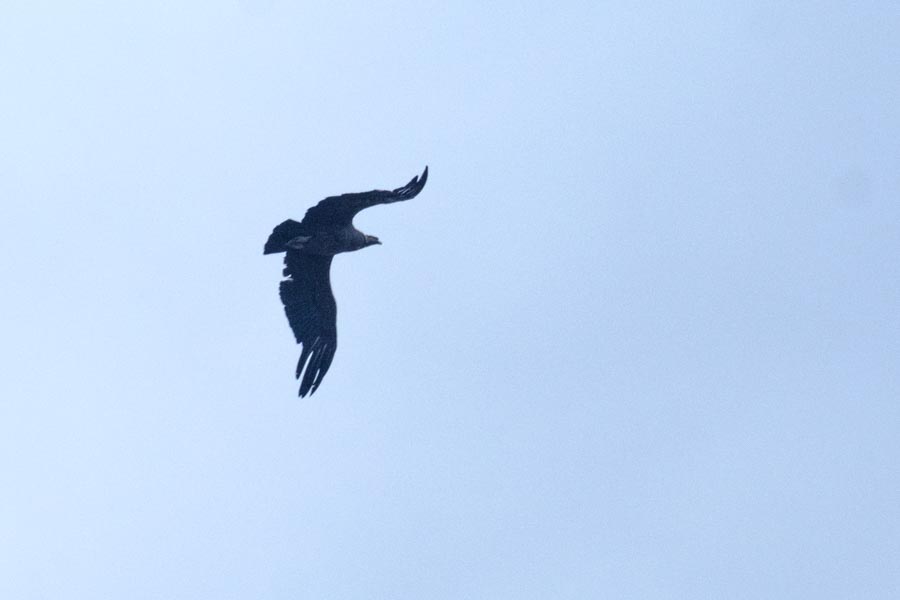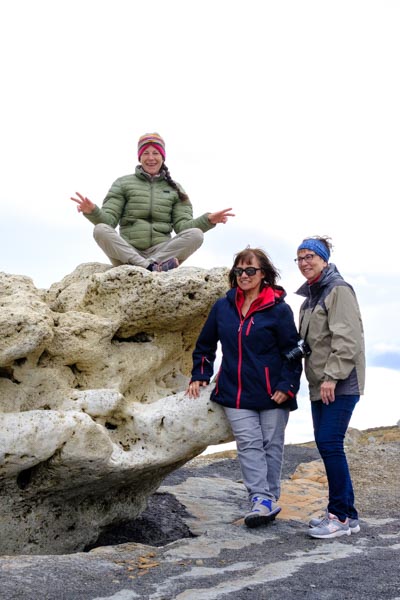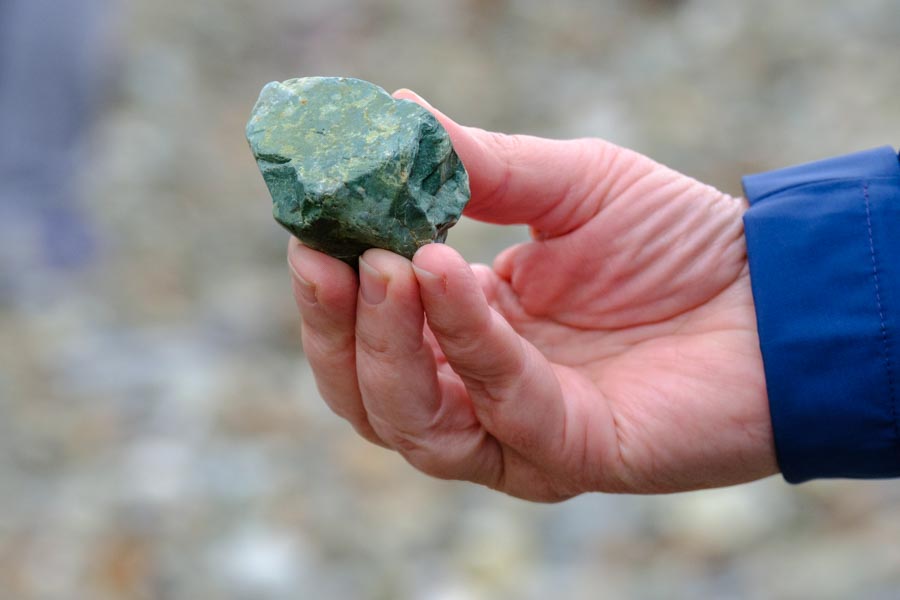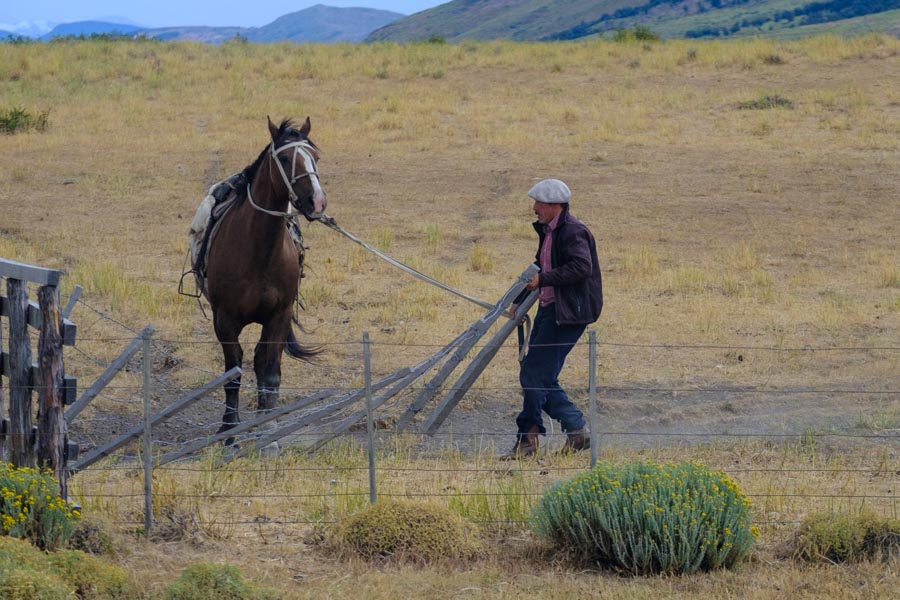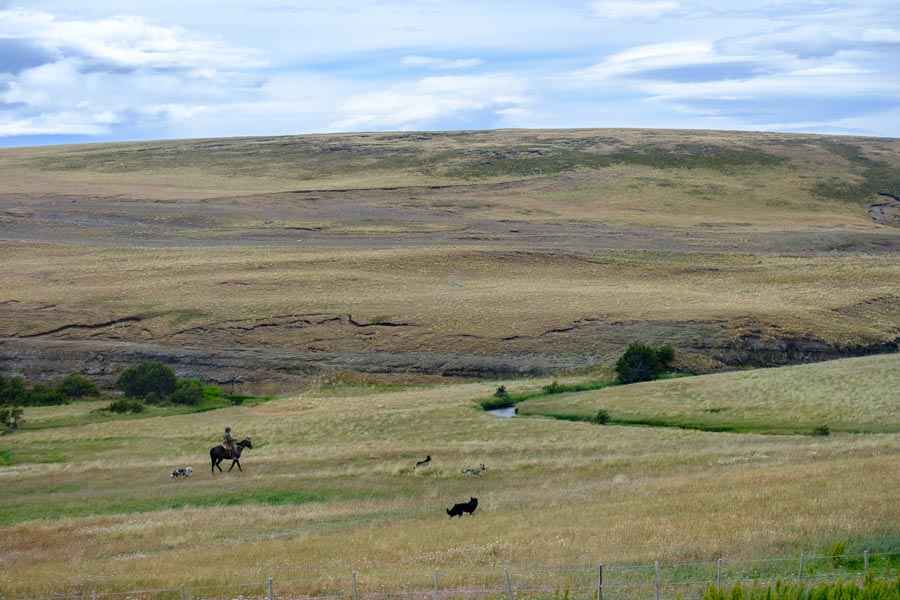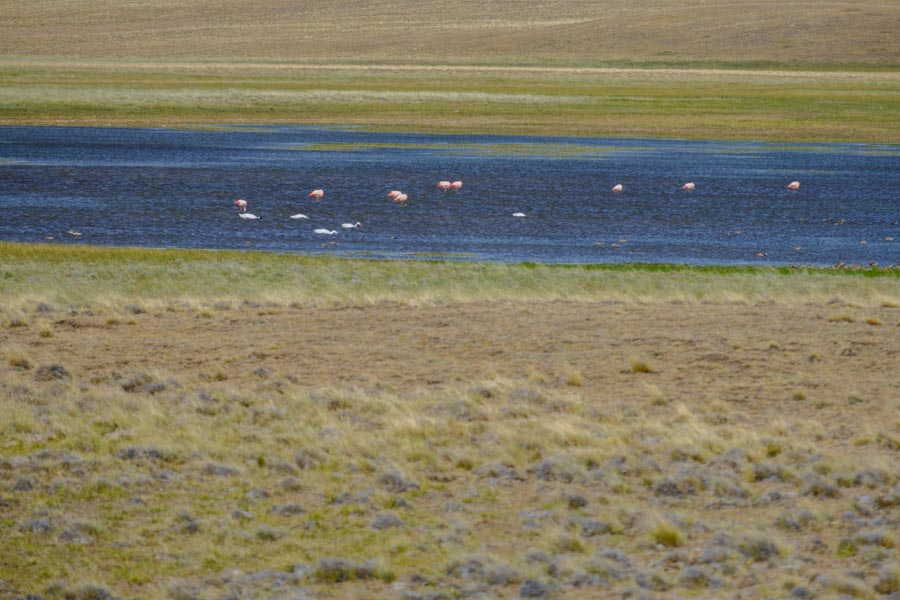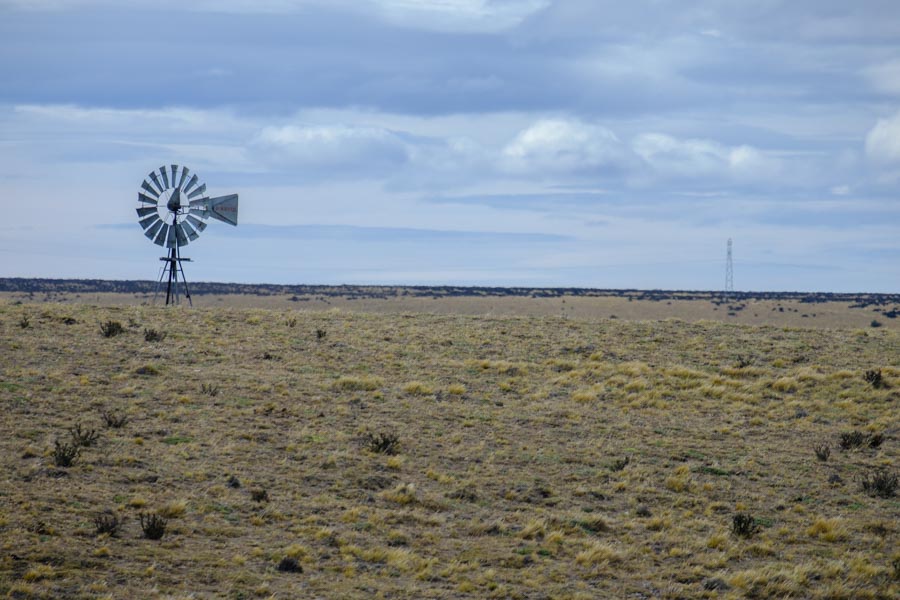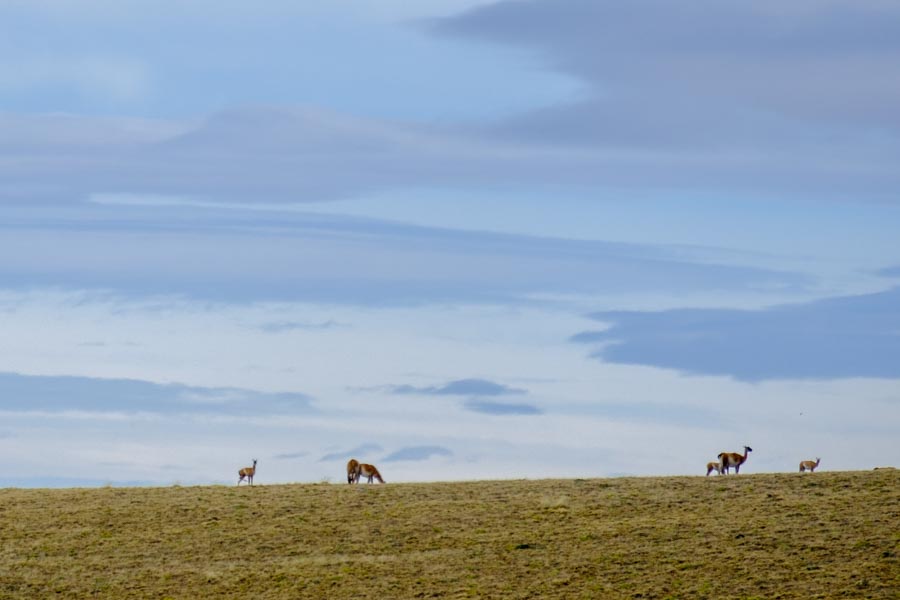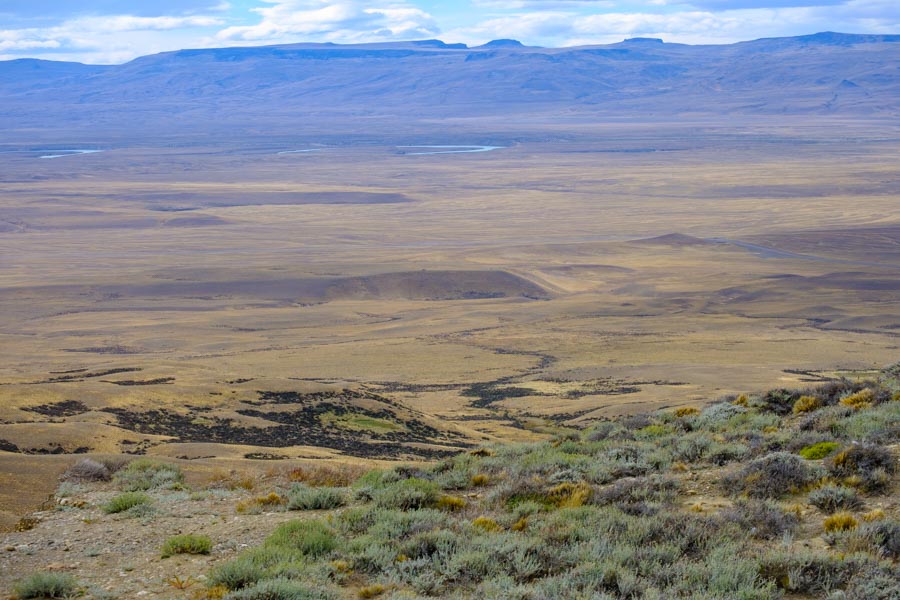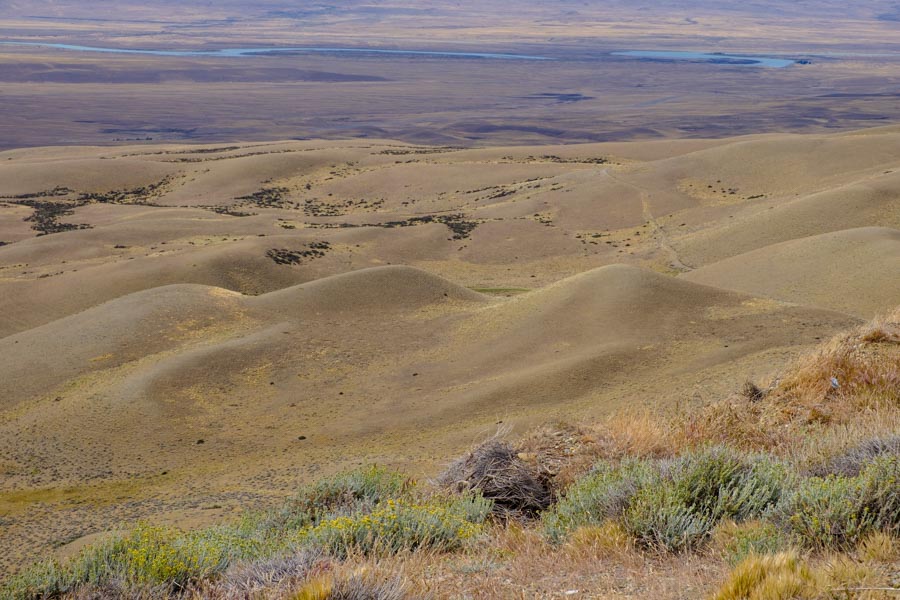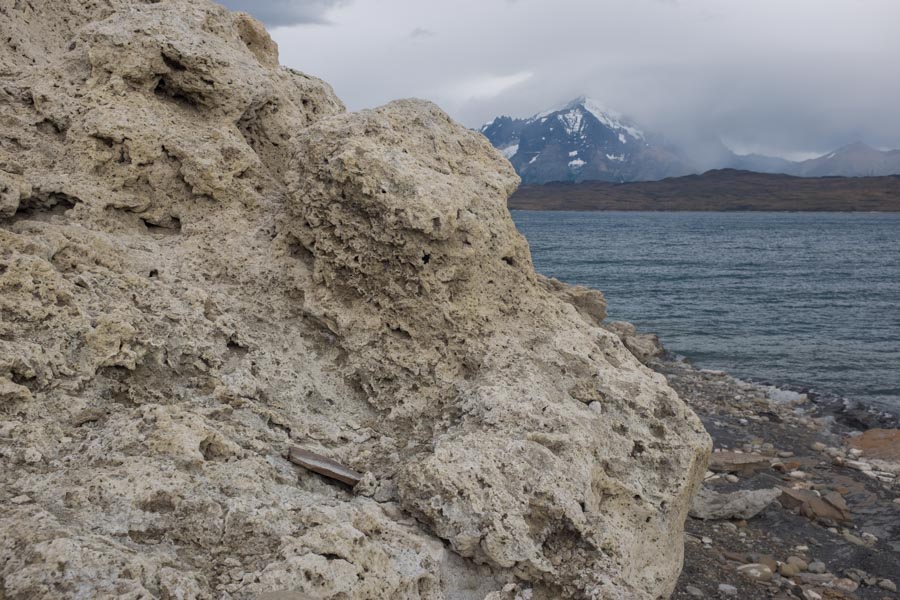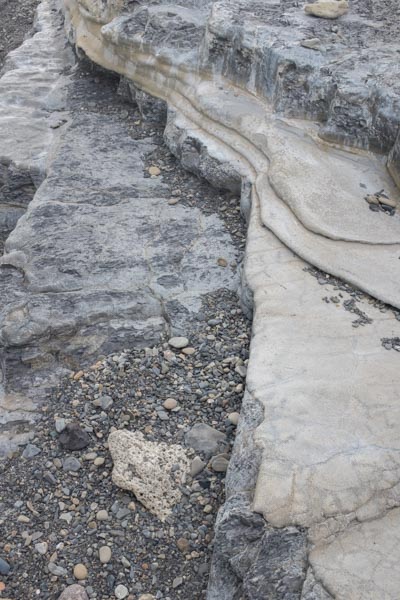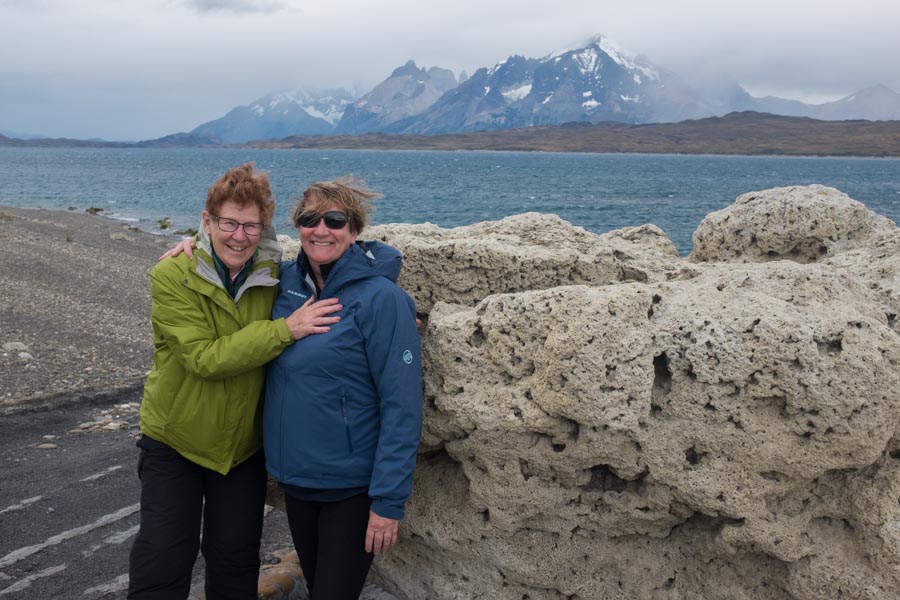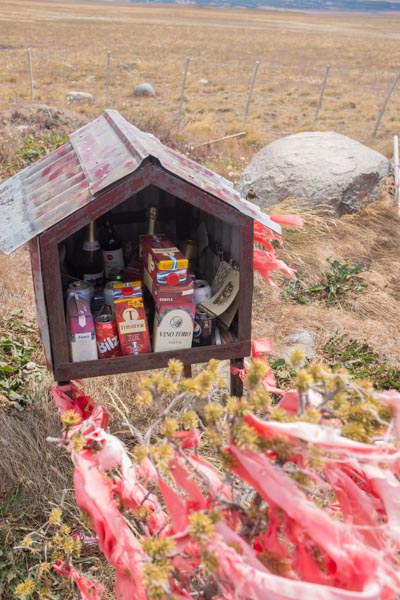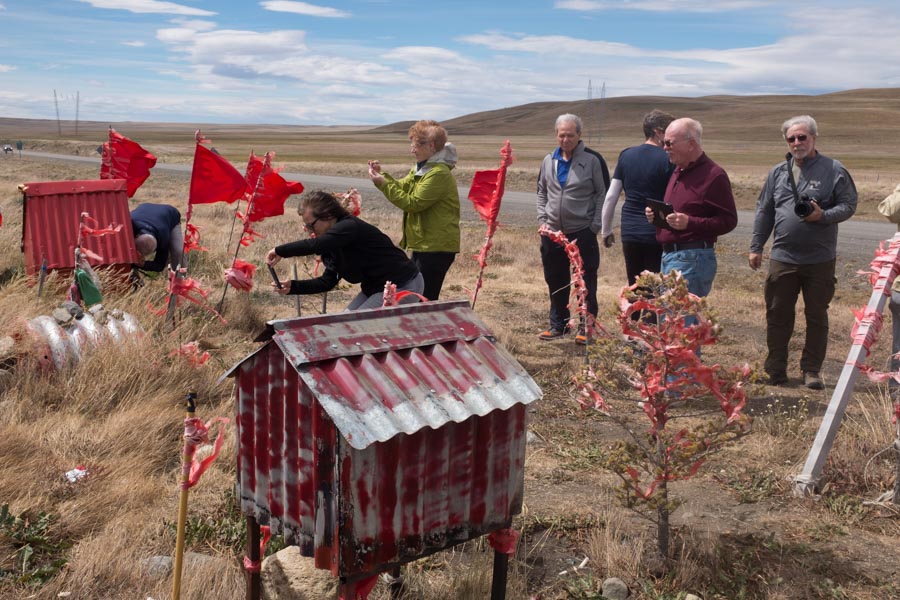We’re here after an eight and a half hours on the road. Thankfully, not all of that was on the road time; there were several diversions to keep us occupied. We only had one nap in the entire trip!
Alejandra, our Chilean guide, led us to a stop in the first hour along a lake where unusual rock formations were to be found. These rocks, resulting from interaction of the calcium chloride in the water and certain bacteria and algae, are found only here and a few other places around the world. Those rocks on the shore were porous and said to contain fossils. The rocks still partially submerged in the lake are actually growing, living things. Alejandra pointed out that these rocks blur the line between living organisms and inanimate rocks that we normally experience.
The shore also had a wide variety of medium-sized stones of all colors and makeup. They represent the rocks dug up by ice age glaciers as they made their thousand mile journeys.
Next stop: the border. The process of crossing into Argentina involved:
- Lunch at the only restaurant and gift shop at the border. For once I was glad to see a gift shop. We had 64,000 Chilean pesos, worth about $100 U.S. Fortunately we found just enough stuff to buy so that I was left with a lonely 1,000 Peso note, which happens to portray Torres del Paine on one side. I’ll have to frame it I guess
- Chile passport control
- A fifteen minute ride through no man’s land to Argentine passport control
- A bus transfer to an Argentine vehicle and a Gordy, our new local guide
Immediately after entering into Argentina our driver pulled off at a roadside shrine to Gauchito Antonio Gil – Little Cowboy Antonio Gil. Without getting into the details, Gauchito Gil stole from the wealthy and gave to the gauchos who needed some simple luxuries for life on the steppe: a knife, cookies, beer and so on. Finally he was caught. The sheriff started out with Gauchito Gil to see the judge, a two-day ride. The sheriff said, “Antonio, everyone knows you will be found guilty and hanged so to save me a two-day ride each way, I’ll just hang you here.” So he cut the Gauchito’s throat and hung him by his heels. Before he died, Gauchito Gil told the sheriff, “You’re son is ill and will die. If you give me a nice resting spot when I’m gone I’ll see if I can help from the other side.” The sheriff didn’t believe Gil, left him hanging by his heels, returned home and found his son deathly ill. He hurried back, cut Gauchito down and gave him a decent burial. The son recovered. So now many, including most truck and bus drivers, stop and pay homage to Gauchito Gil by leaving a token, mostly beer, wine and whisky, at one of the many shrines spread around Argentina. We stopped and left a couple of cans of beer and, guess what, our trip was uneventful.
Luis was once on a trip and learned from his mother-in-law that his wife and daughter were in the emergency room. Being hundreds of miles away he could do nothing but did leave a bottle of expensive bottle of whisky at a Gauchito Gil shrine. A few hours later his mother-in-law called back to report that both wife and daughter had fully recovered. Luis has no formal religion but he can only shake his head and believe in Gauchito Gil at least.
Gordy gave us a rundown on a variety of topics, starting with the San Miguel region through which we were passing and in which Calafante is located.
Talk about a desolate place! It receives 4 inches or rainfall in an average year and the Patagonian winds dry that up quickly. Only 5% of the land is suitable for crops; sheep grazing is the only real agricultural operation that is viable here There are three things going for the region:
Oil. Forty percent of Argentinian petroleum comes from Santa Cruz. But, the federal government owns all mineral rights in Argentina so little revenue flows to Santa Cruz and the people who live there.
Tourism. People thought he was crazy but President Kirchner spent $13 million to build an airport in Calafate, the center of nowhere. But the strategy worked: make Calafate a tourism center for the glaciers of Torres del Paine. Private enterprise invested $200 million in the region and today over 500,000 tourists pass through Calafate.
Wind energy. The wind blows a lot in Santa Cruz. Why not build a wind farm and use the energy to power new industrial operations that require cheap electricity. The jury’s still out on this one.
Gordy went on to talk about Argentina’s economy in general. There’s no way to sugar coat it: it sucks. Inflation is the biggest symptom, as I discussed earlier. The underlying problem is that government employees are added willy-nilly and the government printing presses pay generate the pesos to make payroll. The problem is that against foreign currencies the peso is funny money – just like the bills in Monopoly. Smart people hoard foreign currencies – U.S. dollars, Euros, Yen, whatever. They convert to pesos right after a devaluation, which occurs about every six months, and immediately buy whatever goods they need. Unemployment is only 9%, but still . . .
When we were at the home-hosted dinner in Buenos Aires our hostess and host said corruption is the biggest problem in Argentina. “What can be done to fix the Argentine economy?” I asked Gordy. “Set of a bomb in Buenos Aires,” he said. In other words, no politician has the nerve or political ability to fire the workers who do nothing but destroy the economy. Corruption? Maybe excess public-sector employment is the same thing as corruption.
The scenery matched Gordy’s description – dead-appearing grass with little green, few animals and virtually no habitation. The land was generally flat although we traveled down a broad valley, obviously carved out by glaciers, surrounded on either side by low mountain ranges.
Calafate is a town that’s grown from 3,000 or so to over 25,000 since the airport was commissioned. It has a main drag tourist district and lots of new housing for the newcomers. There’s also a rather large park, actually a road with broad sidewalks that faces an arm of the Argentina lake. Nestor Kirchner, when told he needed exercise to combat heart disease, had the road built so he’d have a place to walk. Walking downtown didn’t work out for him because everyone in this small town knew him and would stop him to ask for favors. He did not run for reelection but rather supported his wife, Christina, who was elected to replace him. Nestor oversaw a surge in economic growth. Not so his wife, who became mired in a corruption scandal. Nestor died of cardiac arrest during her term in office.
Tomorrow’s our last full day of touring. We’ll visit the Glaciers National Park and the Moreno glacier.

